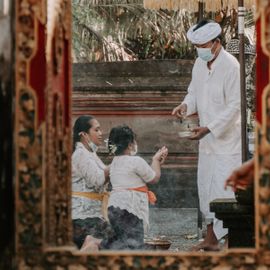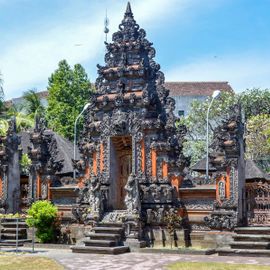Understanding Symbols In Balinese Architecture Ornaments That’s Full Of Positive Energy
Understanding Symbols In Balinese Architecture Ornaments That’s Full Of Positive Energy.
Balinese architecture is famous around the world due to the uniqueness of its ornaments. The ornaments of the Balinese architecture aren’t only function to beautify the building. It is also an embodiment of Balinese philosophy and culture that is influenced by elements of Hinduism, as the beliefs of its people. To get more info about the meaning of the ornament symbol, check out the article below!
The Meaning of Balinese Ornament Symbols
Generally, there are about 7 types of ornaments in Balinese architecture. The first, namely:
- Karang Gajah. The shape takes the form of an elephant's head, trunk, ivory fangs, and round eyes. This decoration is usually placed in the corners of the rocks at the bottom. The purpose of choosing elephant corals as decoration on the rocks at the bottom of the building is because elephants have high physical strength. Elephants can strengthen the integrity of the building with the strength of their body muscles.
- Karang Goak or Karang Manuk. The shape resembles a goak or crow, even though some shapes are more like a chicken. This element is easily recognized by the presence of crow or chicken beaks. This decoration is placed in the corners or in the middle of the rock at the top.

- Karang Boma. You can find this at the top of the entrance of the Balinese house. This ornamental characteristic is the face of Hindu mythological creatures that spread the right and left hands. The meaning is as a repellent for all danger.
- Karang Sae. Karang Sae takes the form of giant pointy-toothed fangs. It has a pair of horns and a face that is thinner than the face of Karang Boma. Karang Sae sculpture is placed above the entrance gate of the architecture of public house buildings, school buildings, and offices. 
- Karang Tapel. In Indonesian, Tapel is a mask. Its size is smaller than Karang Boma. The shape of the mask has an upper lip with flat teeth, rounded pointed eyes, and nose forward with the tongue sticking out. This decoration is placed at the foot of the building (bebaturan), on the flat fields and on the corners of buildings. According to Hindu philosophy, this symbol aims to bring prosperity.
- Karang Bunga. Coral leaf ornament in the form of plants with various elements such as flowers, leaves and stems. The characteristics of these corals resemble pepatran, it's just that the coral leaves have a three-dimensional shape.
- Karang Bentolu. The embodiment of bentolu corals is relatively easy to identify because it has a motif in the form of a one-eyed giant, glaring face, with open jaws and sharp fangs. Karang Bentolu in buildings with Balinese architecture can be found in various parts of the building. Such as at the base of the building (bebaturan), at the umpak (joints), on the body of the building, or on the decoration at the top of the building roof.

If you pay attention to the ornaments above, all of them have a face shape. This relates to the concept of traditional Balinese architectural art which depicts buildings as a symbol of the existence of mountains in the real world. Mountains are natural elements on earth that are purified and believed to be a place where various positive energies, natural forces, and holy spirits reside. For this reason, the placement of face-shaped ornaments in Balinese architectural buildings contains prayers that the building will always be surrounded by positive energy and holy spirits.



















